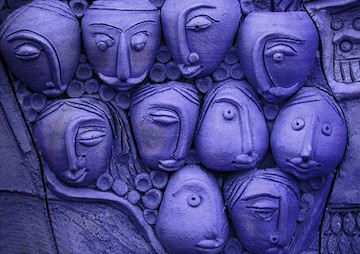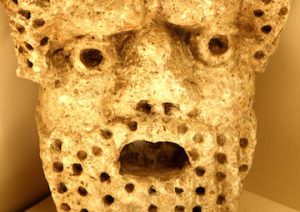Preferences for High Masculinity and Femininity May Be Peculiar to Modern Societies
A new survey of 12 populations around the world challenges the commonly held assumption that human beings naturally prefer highly masculine men and highly feminine women. Photo by Light Play (CC BY-ND 2.0)
Photo by Light Play (CC BY-ND 2.0)
Photo by Light Play (CC BY-ND 2.0)
A new survey of 12 populations around the world challenges the commonly held assumption that human beings naturally prefer highly masculine men and highly feminine women.
The study, in which a team of psychologists, anthropologists and biologists at Brunel University London surveyed populations of varying economic development, suggests that preferences for exaggerated sex-specific traits may emerge only in what the researchers called “highly developed environments” — meaning those that are urban and densely populated.
Brunel University London psychology lecturer Andrew Clark explained that the researchers “digitally morphed masculine and feminine faces from photographs of people to find out what choices people from small-scale societies made.”
“We found that they didn’t place the same emphasis on ‘sex typicality’, that is, on highly feminine women and highly masculine men. In fact, they often favoured the neutral face, and sometimes the least ‘sex-typical’ one.” The team also found that urban people were more likely to associate masculinity with aggressiveness.
“This data challenges the theory that exaggerated sex-specific traits were important for social and sexual selection in ancestral environments,” Dr. Clark added. “Preferences for sex typical faces are a novel phenomenon of modern environments. It’s probably not a consistent thread in human history.”
The University elaborated in late September:
The team suggest that highly developed environments with large, dense populations may have exposed individuals to a greater range of unfamiliar faces, providing the opportunity – and perhaps motive – to discover subtle relationships between facial traits and behaviour.
[…] A total of 962 participants were shown sets of three opposite-sex composite and digitally manipulated photos. For each set of photographs, representing five different ethnic groups, participants were asked which face was most attractive and which appeared most aggressive.
Read the paper here.
— Posted by Alexander Reed Kelly.
Your support matters…Independent journalism is under threat and overshadowed by heavily funded mainstream media.
You can help level the playing field. Become a member.
Your tax-deductible contribution keeps us digging beneath the headlines to give you thought-provoking, investigative reporting and analysis that unearths what's really happening- without compromise.
Give today to support our courageous, independent journalists.






You need to be a supporter to comment.
There are currently no responses to this article.
Be the first to respond.